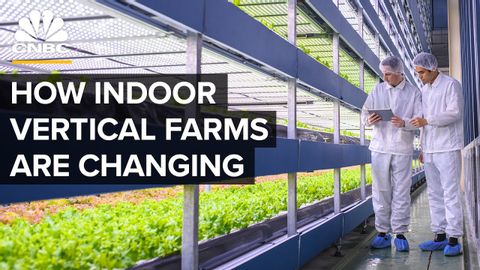Why Vertical Farms Are Moving Beyond Leafy Greens
Kelly Lin が 2022 年 09 月 13 日 に投稿  この条件に一致する単語はありません
この条件に一致する単語はありませんUS /ˈʌltəmɪtli/
・
UK /ˈʌltɪmətli/
US /sɪɡˈnɪfɪkənt/
・
UK /sɪgˈnɪfɪkənt/
US /ɔlˈtɚnətɪv, æl-/
・
UK /ɔ:lˈtɜ:nətɪv/
- v.i.重要な位置を占める
- n. (u.)物質
- n.事柄
エネルギーを使用
すべての単語を解除
発音・解説・フィルター機能を解除

